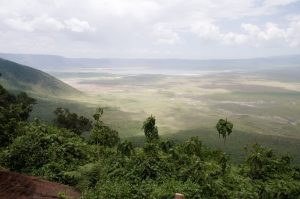Expedition Overview: Kilimanjaro vs Everest
Embarking on an expedition to climb one of the world’s tallest peaks is a dream for many adventurers. Two popular choices for such a challenge are Mount Kilimanjaro in Tanzania and Mount Everest in Nepal. While both mountains offer their own unique set of challenges and rewards, they are distinctly different in terms of terrain, climate, and difficulty levels. In this article, we will compare and analyze the differences between these two iconic peaks to help you decide which one might be the best fit for your next adventure.
Terrain, Climate, and Difficulty Levels Compared
Terrain:
Mount Kilimanjaro, located in Tanzania, is known for its diverse terrain as climbers traverse through rainforests, savannahs, alpine deserts, and glaciers on their way to the summit. The ascent to the peak of Kilimanjaro is a non-technical hike, making it accessible to climbers with various levels of experience. The mountain’s highest point, Uhuru Peak, stands at 19,341 feet above sea level.
On the other hand, Mount Everest in Nepal boasts some of the most challenging terrain in the world. Climbers must navigate treacherous icefalls, rocky ridges, and towering ice walls as they make their way to the summit. Everest’s peak reaches a staggering height of 29,032 feet, making it the tallest mountain in the world.
Climate:
The climate on Mount Kilimanjaro varies greatly depending on the altitude. Climbers will experience warm temperatures in the lower rainforest regions, while frigid temperatures and high winds await them at higher elevations. Despite being located near the equator, Kilimanjaro’s summit is often covered in snow and ice.
Mount Everest, on the other hand, experiences extreme weather conditions due to its high altitude. Climbers must endure sub-zero temperatures, strong winds, and the risk of avalanches and blizzards as they make their way to the top. The mountain’s infamous "Death Zone" above 26,000 feet is where oxygen levels are so low that the human body begins to deteriorate.
Difficulty Levels:
While both Mount Kilimanjaro and Mount Everest are challenging climbs, Everest is considered to be significantly more difficult due to its high altitude and technical challenges. Climbers attempting Everest must acclimatize to the thin air and harsh conditions, making it a physically demanding and mentally exhausting endeavor.
In comparison, Kilimanjaro is often referred to as a "trekking peak" rather than a technical climb. The lack of technical skills required to ascend Kilimanjaro makes it a popular choice for climbers looking to tackle a high-altitude mountain without the need for specialized equipment or training.
In conclusion, both Mount Kilimanjaro and Mount Everest offer unique and rewarding experiences for climbers seeking a challenge. Whether you’re looking for a non-technical hike with diverse terrain or a technical climb with extreme weather conditions, Sunset Africa Safari can help you plan your expedition to either of these iconic peaks. For booking inquiries, please contact info@sunsetafricasafari.com.


